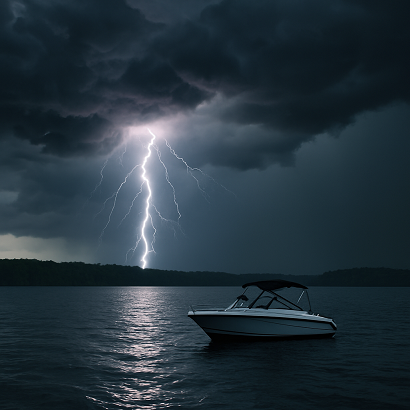As I sit in my home along the shoreline of Lake Wallenpaupack, the winds are howling and there are white caps out in Martin’s Cove. Don’t ask me why, but I started to think about how long it takes for a fish to reach adulthood here in Lake Wallenpaupack.
For starters, is it even possible for fish to reach a reproductive age and successfully spawn? Spawning is most commonly referred to as the act in which a female externally releases eggs and a single male or multiple males fertilize the eggs.
Although there are some similarities, many fish spawn in their own unique way. Some interesting and important facts about Lake Wallenpaupack and our prized fishing is that the Pennsylvania Fish & Boat Commission (PFBC) uses our lake as a brood fish source for extending walleye populations around the rest of the state. Another reason why Catch & Release is so important — the fish aren’t being stocked here, they are being taken to support populations in other waterways.
Love catching stripers? Unless the PFBC decides to continue stocking Lake Wallenpaupack, these fish “DO NOT” reproduce as they need a ton of oxygen flowing over their eggs and a steady current over a period of time which simply doesn’t exist in our lake. So, every fish you take out, means that there isn’t another one coming in unless the state stocks it. This is about managing the ecosystem and environment to the best of our abilities; we all want to ensure that there are plenty of fish to catch!
We’ve pulled together some additional detail surrounding fish life cycles and growth rates, check it out:
Egg
It is commonplace for a male bass as an example to fertilize multiple egg beds. This stage is an unfertilized egg until the male spawns with a female moving the life cycle stage to embryo formation. Depending on species and water temperature, it can be difficult for all nesting sites to be successful.
Embryo (Fertilized Egg)
This is the stage in the lifecycle after a male who most likely spawned with multiple females has successfully fertilized an egg bed. Incubation is the process from where the egg is fertilized to let’s say “hatching”. Again depending on species and water temperature, it typically takes 2-12 days for embryo’s to hatch.
Larva
Now that the fish has hatched, it must go through another stage in the lifecycle called Larva. This is a slow process where fins, tail and even scales begin to form. The Larva is still dependent on the yolk sac for nourishment. This phase of a young fish’s life can last up to a week to two weeks. Bass as an example are still ferociously guarding the nest.
Fry
The point in a fish’s life where it has absorbed mostly all of the yolk sac and it’s swim bladder has formed, this juvenile fish can begin to eat and feed on it’s own. This stage can last up to another two weeks and at this point these young fish still earn the protection of their parent, in most freshwater game fish, the males do the guarding.
Fingerling
The name explains it all, the fish is now the size of a finger. Their fins are nearly fully functional, scales have started to form outside the body and the fish is pretty much on it’s own at this point. Protection is over, they now have to fend for themselves and begin the race to adulthood.
Adult & Spawning Adult
This is when a fish is mature enough to mate. It’s critical that we help manage the fish population by allowing adult / breeder type fish to survive and thrive. Remember, not every fish makes it to adulthood and the more fish we as anglers remove from the body of water without efficient conservation efforts to replenish, the easier it is for a water system to dry up.
Fish Growth Rate
The growth rate of a fish is dependent on several key variables; including but not limited to reproductive success rates, water temperature, habitat, health of ecosystem, pollution and food sources. Below, you’ll find rough estimates for growth projections among many common species found in our Lake.
Largemouth Bass: 1 to 2 years to reach adulthood, however it can take up to 10 years for fish to become true breeders and trophy sized. Keep that in mind; 10 years is a long time. Largemouth Bass typically spawn in spring and early summer once the water hits about 60 degrees for a few consecutive days. Eggs take roughly two weeks to hatch. Males guard the eggs.
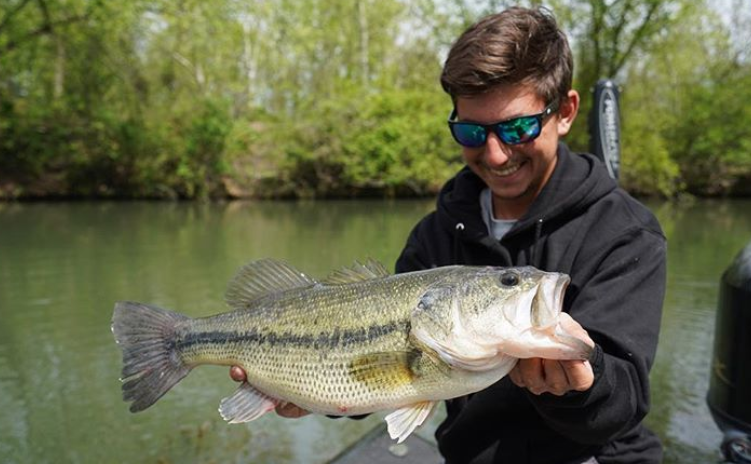
Striped Bass: Typically, 2 years for males to reach reproductive capability and nearly 4 years for females. Factor in growth rates in freshwater and it can take almost 7 years for these fish to reach a healthy size. No spawning in Lake Wallenpaupack!
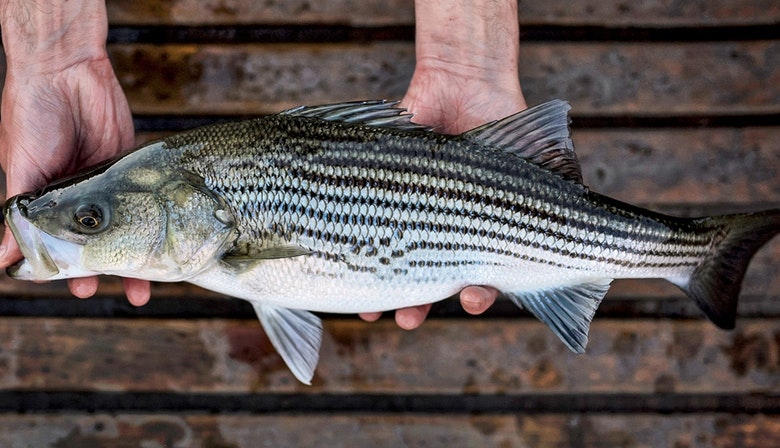
Smallmouth Bass: As the Eagles swoop down and grab a few of our nice sized smallies, it can take 3 to 5 years for these prized fighters to grow to maturity. These fish can live a very long time by fish standards. They begin spawn in May and go to early June, often times it takes 60 to 70 degree water.

Panfish: It can take up to 3 years for a panfish to reach maturity, most fish in this group live up to 8 years but can live as long as 10 years. Crappie spawn in early summer when the water temp hits mid-60s and yes, the males protect their nest for up to 5 days. Bluegills have a longer spawning period, May through as long as August when the water temps hit upper sixties.
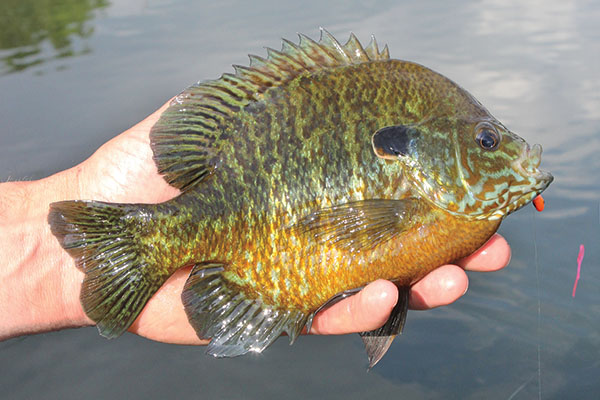
Walleye: It’s unfortunate but one of the best tasting fish is the Walleye, it takes males roughly 2 to 3 years to reach maturity, although females grow fast it takes them 3 to 5 years to reach maturity. Think about that when you are pulling them out of the lake and cooking’em up. They have an early spawn, late March to April. They spawn for 2 to 3 weeks here in PA. Water temps are cooler than most fish; mid-40s to lower 50’s.

Chain Pickerel: Three to four years for these toothy fighters to reach adulthood. Early spring spawn, water temps in the 40’s to low 50s and believe it or not their spawning period only lasts about a week.
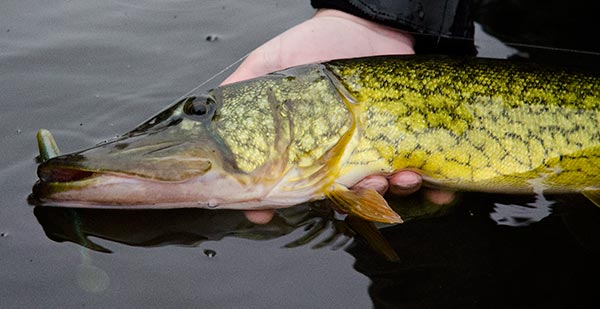
Trout: Depending on conditions and type of trout, we are looking at two to three years to reach maturity. Browns spawn in the fall, October timeframe when the water temps are in the mid-upper 40s and their young hatch in the spring. Parents do not guard the eggs. Rainbows spawn in the spring when the water temps hit low 50s.
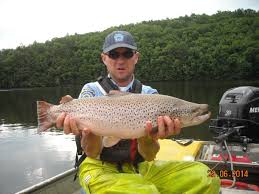
Muskie: Reach adulthood in three to four years but to reach lengths of over 40 inches it may take as long as 10 years. The muskie spawn here in PA occurs in April when the water temps hit 49 to 55 degrees. Good luck catching one though, they are tough!

Northern Pike: Reach adulthood in three to four years and one interesting fact is that that females typically grow faster and mature before males. Northern Pike have a very similar spawn pattern as that of the chain pickerel.

Catfish: Some catfish can spawn in year two, but the majority of spawning doesn’t happen until year 3 of a catfish’s life. In the wild, some catfish don’t spawn until years three to five. These guys are all over the place. Depending on type of catfish, most spawn in the late spring and summer when the water is 65 to 80 degrees warm.

Creating natural habitats, supporting the environment and conservation efforts along with being “PRO” Catch & Release will definitely help support a healthy ecosystem for Lake Wallenpaupack and other bodies of water you fish!
